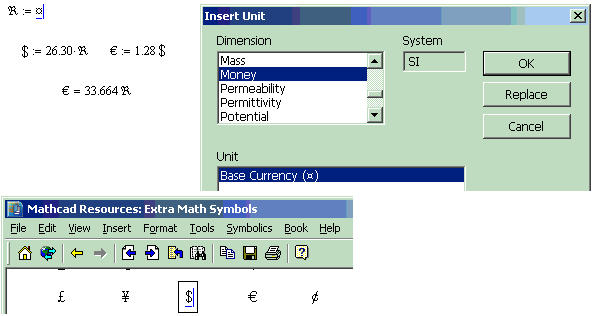


Suitable for undergraduates and early postgraduates who need simple and accessible guidance for solving practical interdisciplinary technical problems.This includes computational experiments, multivariate calculations, inverse problems and optimization problems, with both static and animated visual feedback.
#POLYROOTS MATHCAD 14 SOFTWARE#
The book will also illustrate how the use of modern computer software allows one to significantly expand the range of problems considered beyond those conventionally taught.
#POLYROOTS MATHCAD 14 HOW TO#
The authors hope to show that such calculations can be not only useful, but that the process of learning how to do them can be enjoyable, especially with the help of Mathcad and Python programming skills. You can find these three worksheets, and many more in-depth examples, in the PTC Mathcad Worksheet Library – Education collection at the PTC Webstore.STEM Problems with Mathcad and Python seeks to remove the fear of tackling difficult scientific and technical calculations for future mathematicians, engineers, scientists, and other STEM researchers. When there is more than one solution, such as in the quadratic equation above, the solution is stored within a vector, where each element represents one part of the overall solution.Īlso note that since the expression contains several variables, you must type a comma after "solve," followed by the variable, x, for which you are solving. You can assign the symbolic solution to a variable or a function, making it available for use in the worksheet. This may be more accurate than numerical root finding, and can also yield more information about a solution. You can use the symbolic processor in Mathcad to find roots symbolically. I’m sure you are aware that Mathcad has two types of mathematical engines: numeric and symbolic. If the roots of a polynomial are not distinct, you can read the “Repeated and Paired Roots” section from the worksheet to see how Mathcad handles this situation. The coefficients are listed from lowest degree to highest, including all 0 coefficients.Įxample of how to define the coefficient vector and how to find the roots vector. The input to polyroots is a single vector of real or complex numbers containing the coefficients of a polynomial. This function returns a vector containing the roots of the polynomial. You can use the root function to extract the roots of a polynomial one at a time, but it is often more convenient to find all the roots at once, using the function polyroots. (Note that this function only solves one equation with one unknown.) You can call the root function with either two or four arguments, depending on whether you wish to provide a guess value for the root above the function call, or bracket values for the root within the function call.įor functions with complex roots, you can also use complex guess values to find a complex root of the function. The first worksheet provides examples of how to find roots algorithmically by using Mathcad’s root function. In today’s post I’ll discuss three worksheets that demonstrate some of Mathcad’s built-in functions dedicated to root finding. Do you know how Mathcad can help you find the roots you’re looking for? For example, to minimize a function, you have to find the root of its derivative. Most of the calculations we deal with every day require us to find the roots of a function.


 0 kommentar(er)
0 kommentar(er)
